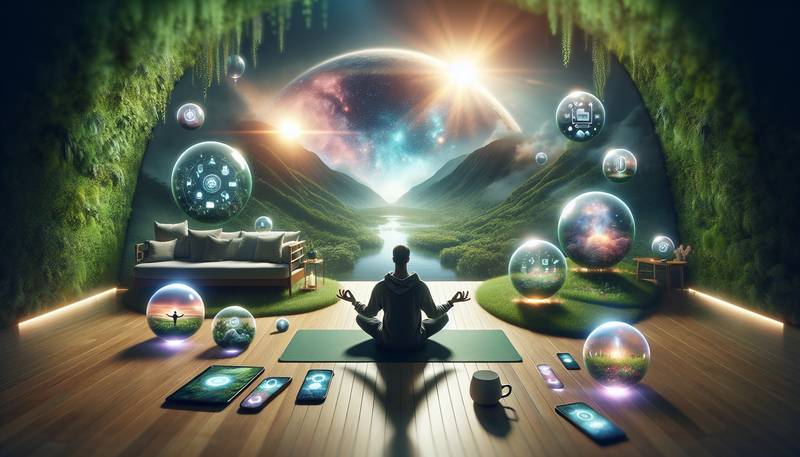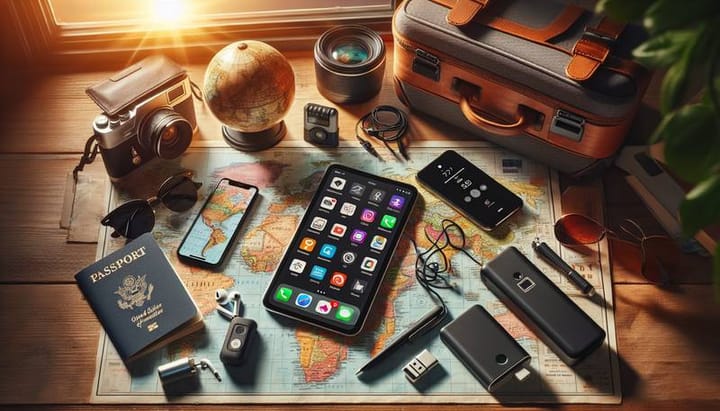How to Use Tech for Mindfulness and Relaxation

Introduction
In today's fast-paced world, it's easy to get caught up in the hustle and forget to take a moment for ourselves. We're constantly bombarded with notifications, emails, and the pressure to stay connected 24/7. It seems counterintuitive, but technology, the very thing that contributes to our daily stress, can also be our sanctuary for mindfulness and relaxation. By leveraging the right tools and apps, we can turn our devices into a haven for mental health and well-being. This guide will walk you through different ways to incorporate technology into your mindfulness practices, helping you to destress, unwind, and find your zen in the digital age. So put your phone on 'Do Not Disturb', grab your favorite pair of headphones, and let's dive into the world of tech-assisted tranquility.
The Power of Meditation Apps
One of the most straightforward ways to utilize technology for relaxation is through meditation apps. These platforms are designed to guide you through various forms of meditative practices, whether you're a seasoned practitioner or a complete novice. Apps like Headspace and Calm offer a range of guided meditations on topics such as anxiety, sleep, focus, and more. They come with customizable session lengths and often include a series of courses to help you deepen your practice over time. For those seeking a more tailored experience, apps like Insight Timer provide access to a vast library of user-generated content, allowing you to explore meditations from a diverse array of instructors and traditions. Additionally, many of these apps include features like progress tracking, reminders to keep you consistent, and communities to support and motivate you on your mindfulness journey. When choosing a meditation app, consider your goals, preferences, and whether you're willing to pay for a subscription or prefer a free service. Then, set aside a dedicated time each day to meditate using your app of choice, creating a ritual that signals to your mind and body it's time to relax and decompress.
Relaxing Through Music and Sounds
For those of us who find solace in audio experiences, tech offers an ocean of options to help us relax through music and ambient sounds. Platforms like Spotify and Apple Music contain a multitude of playlists curated for relaxation, sleep, or focus. You can explore genres like classical, lo-fi, or ambient, or even discover binaural beats and white noise tracks designed to help your brainwaves enter a state conducive to calm. To enhance the experience, consider investing in a high-quality speaker or noise-cancelling headphones for an immersive listening experience, isolating you from external distractions. If you're someone who finds nature sounds soothing, apps like Noisli and A Soft Murmur allow you to mix and match different soundscapes, such as rain, thunder, waves, or forest sounds, to create your perfect calming background audio. Some even offer timer settings, enabling you to fall asleep to these sounds without worrying about them playing all night. Use these auditory tools to create a restful environment, whether you're winding down before bed, taking a short mental health break, or needing some background noise while working on a stressful task.
Creating a Mindful Workspace
Considering we spend a significant portion of our day working, it's vital to create an environment that promotes focus and calm. Start by decluttering your physical space, as a tidy workspace can lead to a clearer mind. Then, use technology to enhance your environment. Smart lights with adjustable color temperatures can mimic natural daylight cycles, boosting your mood and productivity. Apps like F.lux or Apple's Night Shift adjust your screen's brightness and color temperature based on the time of day, reducing eye strain and helping maintain your natural circadian rhythms. Furthermore, productivity apps such as Forest encourage mindfulness by gamifying focused work time, allowing you to grow virtual trees as long as you resist the temptation to check your phone. To take this a step further, incorporate a standing desk or an under-desk elliptical to keep your body active and your mind engaged. A mindful workspace is not just about the physical space but also about creating routines and using tools that help maintain a balanced and focused mindset throughout your workday.
Digital Detoxing for a Clear Mind
In an age where our lives are intertwined with our devices, it's essential to occasionally disconnect and give our minds a reprieve from the digital world. Digital detoxing—stepping back from the internet, social media, and the constant barrage of notifications—can dramatically improve mental clarity and alleviate stress. Begin by setting aside specific times of the day or week when you go offline, replacing screen time with activities like reading, journaling, or engaging with nature. Use apps like Offtime or Freedom to help enforce these boundaries by blocking access to distracting apps and websites for set periods. If a full detox seems daunting, start small with daily tech-free moments and gradually increase the duration over time. Remember, the goal is not to eliminate tech usage entirely but to create a more mindful, intentional relationship with it, enabling you to enjoy the benefits without becoming overwhelmed by the drawbacks.
Using Wearable Tech for Stress Management
Wearable technology has evolved to not only track our physical health but also to play a significant role in monitoring and managing stress. Devices like the Apple Watch or Fitbit include features that can track heart rate variability (HRV), a metric associated with stress and overall heart health. These wearables often provide guided breathing exercises or relaxation prompts when they detect elevated stress levels. Additionally, sleep tracking can give valuable insights into the quality of your rest, a critical component of stress management. Many wearables also sync with mindfulness and meditation apps, allowing for seamless integration of these practices into your daily routine. By paying attention to the data these devices provide, you can identify triggers and patterns in your stress levels and take proactive steps to manage them before they spiral out of control.
Conclusion
Embracing technology as a tool for mindfulness may seem paradoxical, but when used strategically, it can serve as a powerful ally in the pursuit of inner peace. From meditation apps to relaxing soundscapes, from creating a mindful workspace to enforcing digital detox periods, technology offers a plethora of options for those seeking to infuse their lives with calm and focus. Remember, mindfulness isn't about completely silencing your thoughts or eliminating stress; it's about developing a greater awareness of your mental and emotional states and learning to approach them with gentleness and patience. As you integrate these tech-facilitated practices into your routine, approach them with curiosity and an open mind, allowing yourself to explore what truly brings you relaxation and peace. By doing so, you'll not only improve your relationship with technology but also nurture a more deliberate, serene approach to both your digital and offline life.


